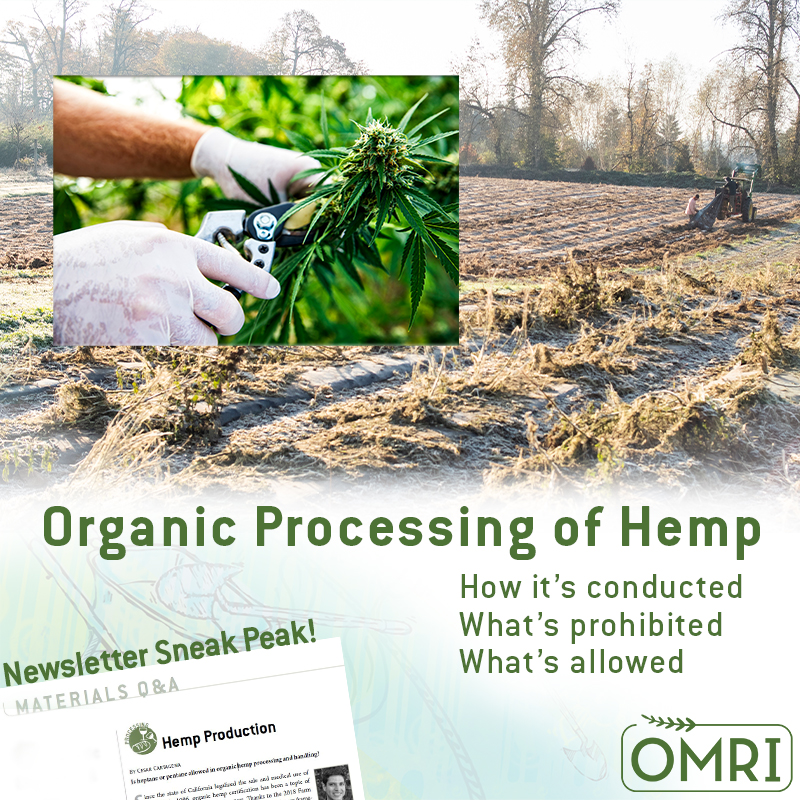Hemp Production
 Is heptane or pentane allowed in organic hemp processing and handling?
Is heptane or pentane allowed in organic hemp processing and handling?
By Cesar Cartagena
Since the state of California legalized the sale and medical use of cannabis in 1996, organic hemp certification has been a topic of particular interest to farmers and operators. Thanks to the 2018 Farm Bill, which directed the USDA to establish a national regulatory framework for hemp production, farmers in the U.S. can now grow hemp in states that have a licensing and registration program. The USDA published a final rule on January 19, 2021, providing regulations for the production of hemp in the United States effective on March 22, 2021. The USDA’s National Organic Program (NOP) has confirmed in NOP Instruction 2040 that NOP-accredited certifying agencies can review and approve organic system plans for industrial hemp produced domestically. Inevitably, operators have questions about what input materials are allowed for use in organic hemp production. This is particularly true for inputs allowed under the processing and handling scope, as it is common to extract various cannabinoids found in hemp in order to produce cannabidiol (CBD) products. Extraction often involves the use of synthetic solvents, including heptane and pentane. Under the USDA organic processing standards, use of synthetic solvents is prohibited in the production of organic products unless included at §205.605(b). Instead, allowed extractants such as water, carbon dioxide or organic ethanol must be used.
The industrial hemp sector is heavily reliant on the extraction of CBD, as this particular cannabinoid can be formulated into various products such as tinctures, vaporizer pens, balms, lotions and more. In order to carry out a safe, profitable extraction operation of CBD and other cannabinoids, removing all solvents from the final product is a crucial step in the manufacturing process. Under USDA organic standards, processing or handling certified agricultural products with synthetic solvents is not allowed, even if this solvent is removed from the final product. Fortunately, both carbon dioxide and ethanol extraction of CBD are allowed, and are common commercial methods used in separating CBD from hemp. (If ethanol extraction is used, it must be done with organic ethanol.) It is important to note that separate standards apply to extracts that are used as crop inputs.
CBD oil and other CBD products can be certified organic as long as the extraction method complies with the USDA organic regulations. However, CBD food products, or products making a health care claim, cannot be certified organic at this time. In addition, the concentration of delta-9 tetrahydrocannabinol (THC) in the final product cannot exceed 0.3 percent on a dry-weight basis. While industrial hemp is now technically legal in all 50 states, production can only occur domestically in states that have a licensing and registration program. Please consult with your certifier about organic hemp certification requirements specific to your state.
This article originally appeared in the summer 2021 issue of the OMRI Materials Review newsletter, and was updated in January 2024 by Research and Education Manager Peter Bungum.








